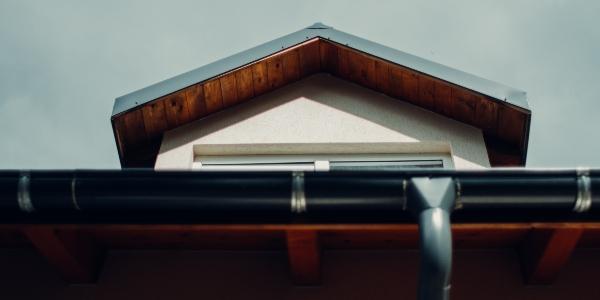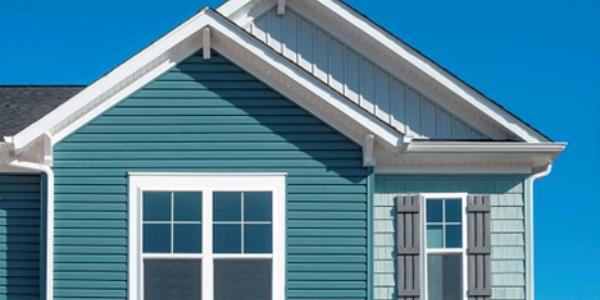Trouble in Paradise? Not With Stone-coated Metal

By Trevor Underwood, DECRA Metal Roofing.
With a roof that can withstand the elements, coastal living remains dreamy.
Living on the coast might conjure images of breezy sea air and sunshine-filled beach days, but the reality is that living so close to the sea can take a huge toll on homes. When the weather isn’t peachy, hail, wind, rain and salt air break down some roofing materials — not to mention the damage that hurricanes can do to a roof. As a homeowner, you need a durable, resilient roof when you live on the coast.
A popular choice is stone-coated metal, which is designed to bridge the gap between industrial durability and architectural beauty. So you can still get the seaside aesthetic you want without the compromises in strength and style, which comes with asphalt shingles, clay tiles and wood shakes. When researching for the most resilient materials on the market, be sure to look into stone-coated metal to stormproof your home this season.
But first, what is stone-coated metal roofing?
Stone-coated metal roofing is exactly what it sounds like – it’s a roof made from steel, which is a form of metal and then it’s coated with granules. It was first used in World War II after the government requested materials to protect critical buildings from German bombsights, but roofers later realized there were more advantages to the coating. After years of exposure to the elements, the material’s adhesive bonding preserved the condition of the metal roof on those buildings for long-lasting performance.
Since then, DECRA Metal Roofing has built upon that resilience, developing a state-of-the-art acrylic-based bonding formula, with a zinc alloy stone coating over multiple layers of high-grade, impact-resistant metal.
The goal of stone-coated metal is to provide a more durable and dependable roofing system that retains the aesthetic beauty of a traditional roofing material. As such, the stone-coating formula can achieve the same look of asphalt, tile or wood roofing without sacrificing durability.
Steel makes the perfect substrate for creating a variety of profiles, and the stone coating allows for a wide variety of colors, textures and shapes to suit the design requirements of any style. This is ideal for coastal homes that traditionally incorporate cedar, tile or shake roofs.
How can it protect your home from storms?
With multiple layers of metal, stone coating adds extra strength to your roof. This comes in handy for coastal homes that face strong winds, large hailstones and harsh rains during the spring and summer months.
Wind
High winds from tropical storms can pose a serious danger to coastal homes built with traditional roofing materials. Wood shakes, for example, tend to split and loosen around the fasteners. When this happens, the underlying roof deck is exposed to the elements, making it easier for wind, hail and rain to seep in.
DECRA uses a unique interlocking system to secure its profiles in place with corrosion-resistant stainless-steel screws to ensure that wind-driven rain can’t penetrate the underlying deck. This resistance gives DECRA one of the highest wind uplift ratings on the market. Plus, our profiles are backed by a warranty for winds up to 120 mph and are lab tested at twice that velocity.
Hail
Durability and longevity are essential components of a hail-resistant roof. Just walking on a clay tile roof for maintenance can lead to fractured tiles, so you can imagine the damage that hailstones at high-velocity winds can do.
Wood shingles and shakes fare better, but as wood ages it becomes more brittle and can split, making the roof more susceptible to hail damage and wind uplift. Similar to wood, asphalt shingles initially fare well against hail, but over time, the shingles become increasingly susceptible to damage from hailstones.
Durability and longevity are essential components of a hail-resistant roof. DECRA has the highest possible UL2218 Class 4 impact rating and is warrantied for hail up to 2.5 inches in diameter. This is why stone-coated metal is considered one of the best roofing materials for hail-prone regions.
Rain
During hurricane season, wind drives rain into coastal homes. This force takes a beating on traditional roofing materials, like asphalt which is known for "fish mouthing,” or cupping and curling around the shingles.
Wood shakes are also prone to warp after repeated wet-dry cycles. Both shingles and shakes are only fastened at the top, leaving the buttons to lift and catch wind and rain, while exposing the underlying roof deck to damaging leaks.
DECRA has performed extensive wind-driven rain testing at speeds up to 110 mph to protect its roofing profiles against water penetration under the most extreme wind conditions.
What are some other benefits of stone-coated metal?
DECRA stone-coated products are engineered to protect your home from the coastal elements, but have additional benefits as well. These include:
- Longevity: Metal roofs have a lifespan that is two to three times longer than traditional roofing materials, like asphalt, tile and wood. Coastal homeowners can have peace of mind knowing they won’t have to worry about a roof replacement because they have a roof that lasts significantly longer than other materials on the market.
- Energy efficiency: Metal roofs can reduce cooling costs up to 25%. Homeowners living in coastal areas can look forward to additional savings over the lifetime of the home by reducing energy costs during the hot summer months.
- Long-term value: A metal roof can increase a home’s value up to 6%. What’s more, homeowners can recoup up to 85.9% of the initial cost of a metal roof.
- Salt air resistance: Salt air causes roofs to corrode and rust, but DECRA's acrylic-based stone-coating formula resists this and protects the underlying metal, so the roof retains the same beauty after decades of exposure.
DECRA roofs can also qualify for insurance discounts in many states.
Protect your property with DECRA’s stone-coated metal
With the 2021 hurricane season already underway, it's important to stormproof your property. Stone-coated metal offers both strength and style to ensure protection against the most severe weather extremes. When you’re ready to make the switch, contact one of our roofing advisors.
Have a question? AskARoofer.
Find your local roofing contractor in the RoofersCoffeeShop® Contractor Directory.
Original article source: DECRA









Comments
Leave a Reply
Have an account? Login to leave a comment!
Sign In